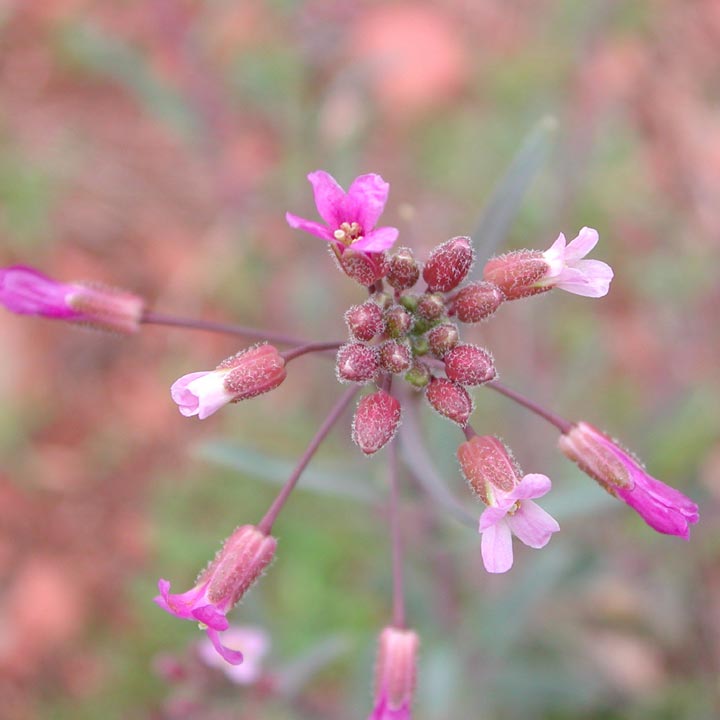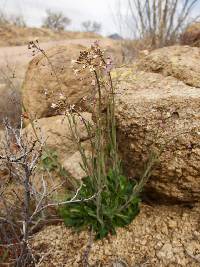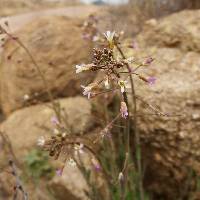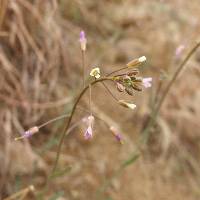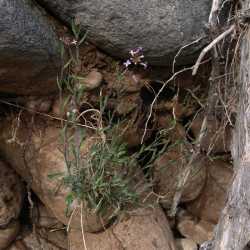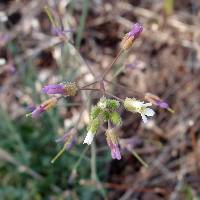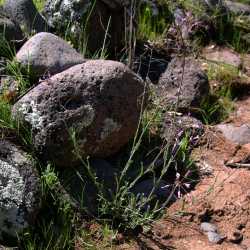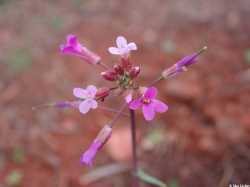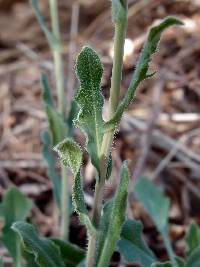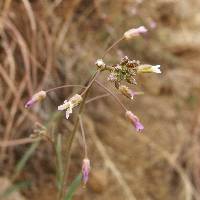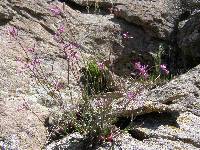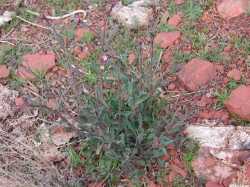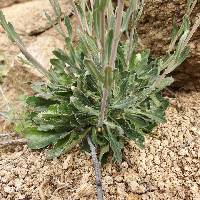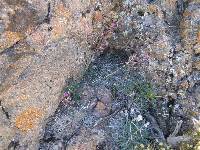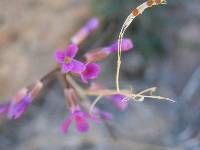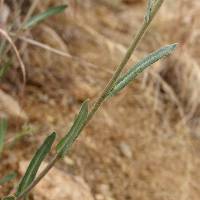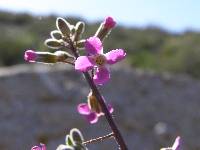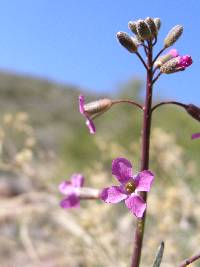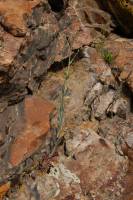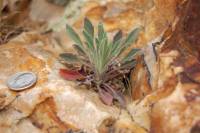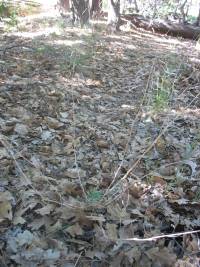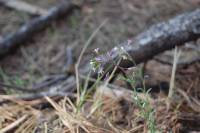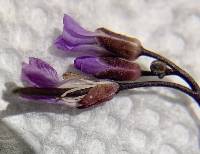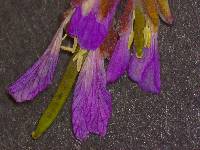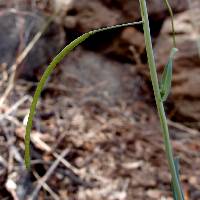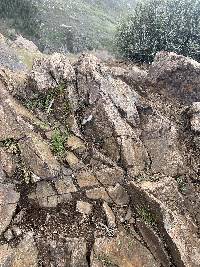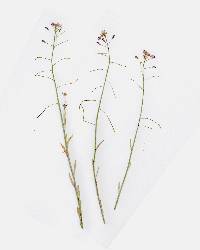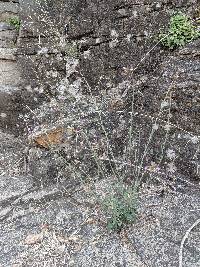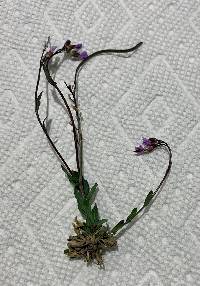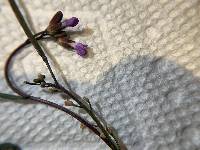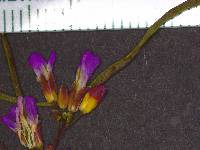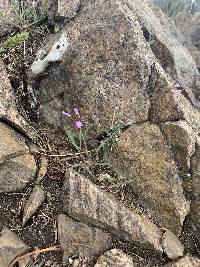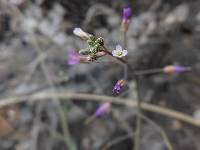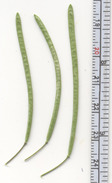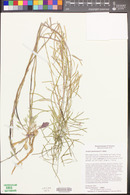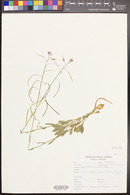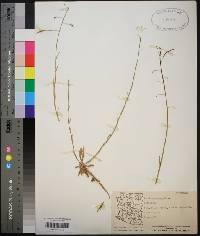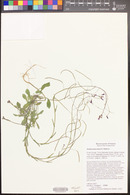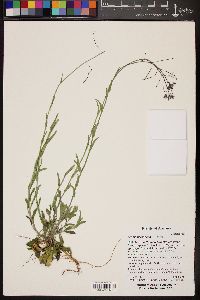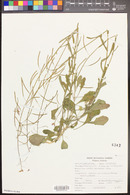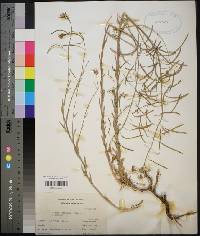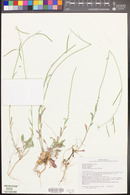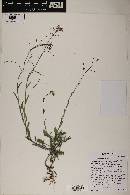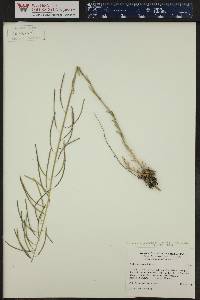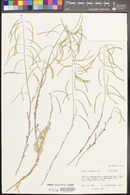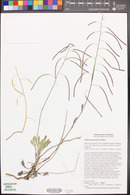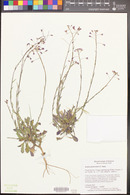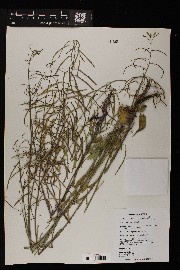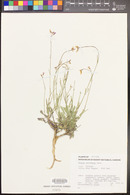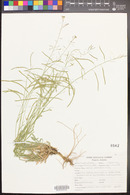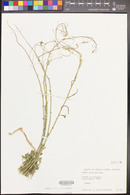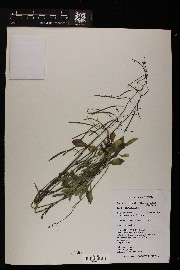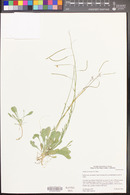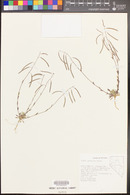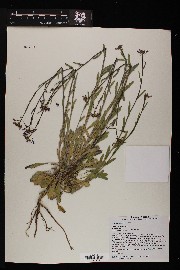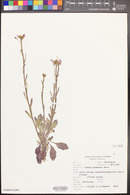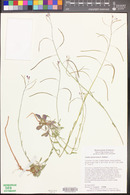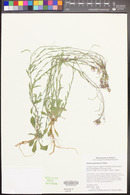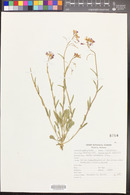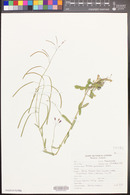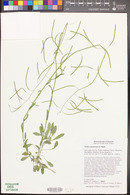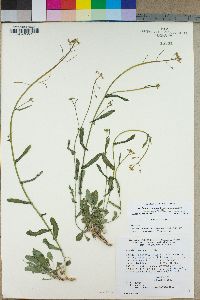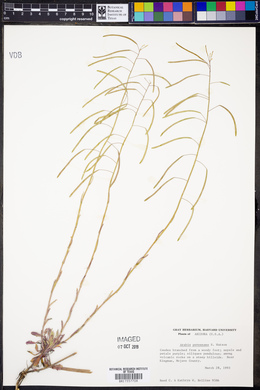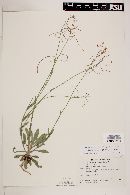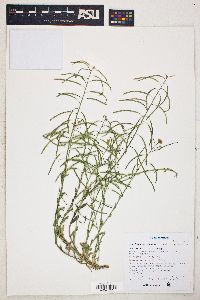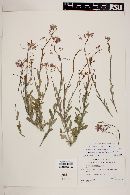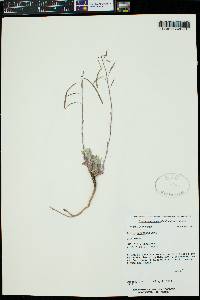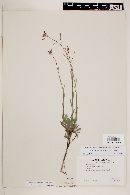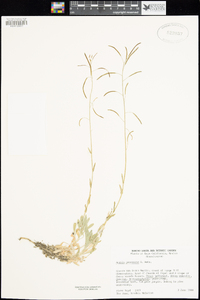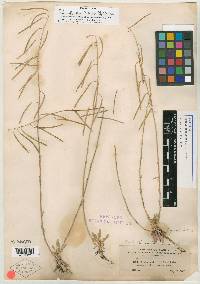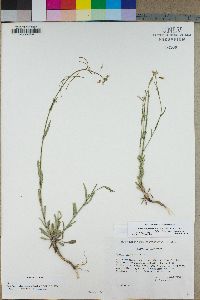Boechera perennans
|
|
|
|
Family: Brassicaceae
Perennial Rockcress, more...rock cress
[Arabis angulata Greene ex Wooton & Standl., moreArabis arcuata var. perennans (S. Watson) M. E. Jones, Arabis eremophila Greene, Arabis gracilenta Greene, Arabis perennans S. Watson, Arabis perennans var. perennans , Arabis recondita Greene] |
Perennials; long-lived; sexual; caudex woody. Stems usually 2-5 per caudex branch, arising laterally proximal to sterile shoots or rosette, often elevated above ground surface on woody base, (1.5-)2-7 dm, densely pubescent proximally, trichomes short-stalked, Y-shaped, 0.2-0.4 mm, often mixed with 3-5-rayed or (rarely) simple ones, usually glabrous distally. Basal leaves: blade oblanceolate to obovate, 3-15(-20) mm wide, margins dentate, ciliate proximally, trichomes to 1.2 mm, surfaces moderately to densely pubescent, trichomes short-stalked, 3-6-rayed, 0.2-0.4 mm. Cauline leaves: 4-12(-17), not concealing stem; blade auricles 0.5-3.5 mm, surfaces of distalmost leaves glabrous. Racemes 16-35-flowered, usually unbranched. Fruiting pedicels usually horizontal, straight or slightly recurved, (6-) 10-25 mm, usually glabrous. Flowers ascending at anthesis; sepals pubescent; petals white to purplish, 5-9 × 1-1.5 mm, glabrous or sparsely pubescent (occasionally some trichomes abaxially); pollen ellipsoid. Fruits widely pendent, not appressed to rachis, not secund, usually curved, edges parallel, (3-)4-7 cm × 1.7-2.1 mm; valves glabrous; ovules 60-96 per ovary; style 0.05-0.4 mm. Seeds uniseriate, 1.1-1.5 × 0.9-1.2 mm; wing continuous, 0.1-0.2 mm wide. 2n = 14. Flowering Feb-May. Rocky slopes and gravelly soil in warm desert, chaparral, low montane habitats; 200-1700 m; Ariz., Calif., Nev., N.Mex., Tex., Utah; Mexico (Baja California, Chihuahua, Sonora). The circumscription of Boechera perennans followed here is much narrower than that adopted by R. C. Rollins (1993). The most significant difference is the removal of Arabis gracilenta. Recent studies (M. D. Windham and Allphin, in prep.) indicate that the latter represents an older name for the species usually called A. (Boechera) selbyi. Although superficially similar, B. perennans is distinguished from B. gracilenta by having stems arising from above ground surface on woody bases, proximal stems with mostly Y-shaped trichomes, strongly dentate margins on basal leaves, and uniseriate seeds. Typically, B. perennans is a sexual diploid largely restricted to the warm deserts of Arizona, California, Nevada, and southern New Mexico. Plants of B. gracilenta are scattered across the Colorado Plateau (northeast of the range of B. perennans) and are apomictic triploids, apparently produced by hybridization between B. fendleri and B. pallidifolia.
Wiggins 1964, Kearney and Peebles 1969, FNA 2010, Allred and Ivey 2012 Duration: Perennial Nativity: Native Lifeform: Subshrub General: Long-lived perennial herbs, 15-70 cm tall, from a woody caudex; stems usually 2-5 per caudex branch, arising laterally just below leaf rosettes or sterile shoots, often elevated above the ground surface on woody base; lower portions of stems densely pubescent mostly with y-shaped hairs (i.e. a short stalk forking into 2 branches); upper stems usually glabrous. Leaves: Basal leaves petiolate, clustered in distinct rosettes; stem leaves alternate, sessile; basal blades oblanceolate to obovate, 3-20 mm wide, margins dentate, surfaces moderately to densely pubescent with stalked, 3-6 rayed stellate hairs; stem leaves few, clasping the stem with auricles 0.5-3.5 mm; uppermost stem leaves hairless. Flowers: White to purple, in terminal racemes of 16-35 flowers, on 1-2 cm pedicels which are ascending in flower and horizontal in fruit; sepals 4, pubescent; petals 4 in a cross formation, white to purplish, 5-9 mm long and 1 mm wide. Fruits: Capsules linear, 3-7 cm long and 2 mm wide, usually curved, widely pendent, glabrous; seeds 1 mm long, 1 mm wide, winged, in one row per locule. Ecology: Found on rocky slopes and gravelly soil in warm desert, chaparral, and low montane habitats, below 6,000 ft (1829 m); flowers February-May. Distribution: AZ, CA, NV, NM, TX, UT; south to n MEX Notes: Because of hybridization, polyploidy, and self-fertilization, Boechera is an extremely problematic group. There have been several re-organizations of this group over the years (including splitting it out from the genus Arabis). For simplicity it is better to use a recent treatment to identify your plants; this description is based on the Flora of North America treatment (2010) and the key divisions in the Flora Neomexicana (Allred and Ivey 2012). B. perennans is a fairly common early-flowering perennial in the warm desert regions of the southwest. One of its distinguishing features is that it often develops a footlike extension of the caudex between the basal leaves and the ground, appearing to be the consequence of shedding the basal leaves from the previous season. It is most similar to B. gracilenta; it is distinguished by the woody base that elevates the stems and basal leaves above the ground; the toothed margins on the basal leaves; and the mostly y-shaped hairs on the lower portions of the stems; and the seeds in one row per locule. Ethnobotany: Used to treat hiccoughs caused by dry throat; to counter the effects of a bad dream; and taken or made into a lotion to treat general body pain. Etymology: Boechera is named after Tyge Wittrock Boecher (1909-1983), born in Copenhagen, an authority on Arctic vegetation and the flora of Greenland who also worked in Argentina; perennans means perennial. Synonyms: Arabis angulata, Arabis arcuata var. perennans, Arabis eremophila, Arabis recondita, Boechera perennans Editor: SBuckley 2010, FSCoburn 2015, AHazelton 2017 |
|
|
|

